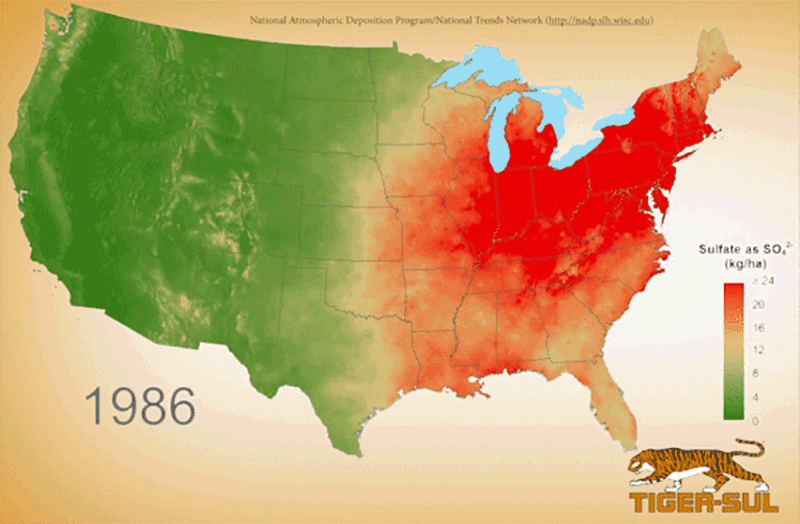
Before 1990, sulphur deficiency in crops was not covered in most agronomic classes. At the time, the impact of acid rain was the major concern and sulphur deficiency just an academic exercise. However, times have changed. The 1990 Amendments to the Clean Air Act of 1970 brought authorized programs for acid deposition control. Under this amendment, SO2 levels applied to the fields from the atmospheric pollution have dropped immensely. Crop varieties have changed, yields have increased (in some cases dramatically), producers are changing their tillage to a minimum or no-till operation, and the fields have high amounts of crop residue – all leading to increased S needs. Today, when yellowing of the crop is the primary symptom, S deficiency should be considered.
Below is a link to additional information we think is important to your understanding of sulphur deposition: (links require Portable Document Format (PDF) reader)

